#St. Catherine
Explore tagged Tumblr posts
Text
Saint "Cat"herine wonders if you can find a cat more educated, more wealthy, or of higher birth than she
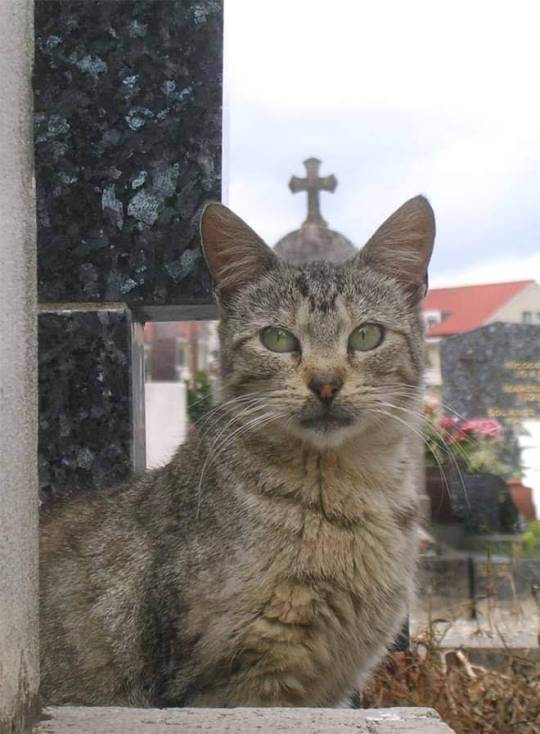
55 notes
·
View notes
Text

St. Catherine wooden church in Honfleur, Normandy region of France
French vintage postcard
#ephemera#photography#vintage#briefkaart#region#carte postale#french#postcard#photo#sepia#ansichtskarte#normandy#postkarte#church#wooden#catherine#postkaart#france#st. catherine#honfleur#postal#tarjeta#historic
10 notes
·
View notes
Photo

André Beauneveu - Saint Catherine (1380), Church of Our Lady, Kortrijk
Photographed by PMRMaeyaert in 2008
76 notes
·
View notes
Text
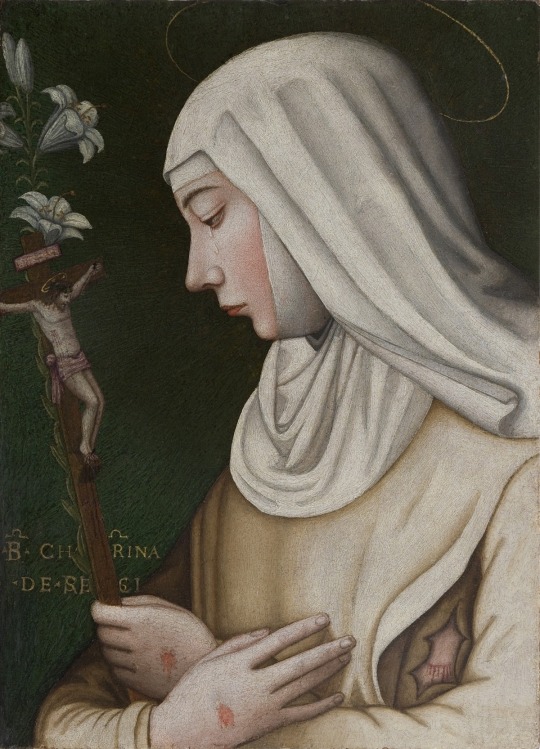
Plautilla Nelli, St. Catherine with Lily (ca. 1550). Collection of Le Gallerie Degli Uffizi, Florence.
15 notes
·
View notes
Text
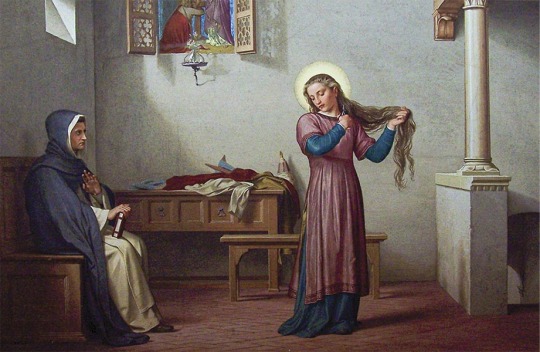
Scenes from St. Catherine’s life: the cutting of her hair to signify her break with the world – Oratorio della Camera in the Sanctuary of the House of St. Catherine, Siena (Italy)
9 notes
·
View notes
Text

Happy anniversary to Ursulines around the world!
On November 25, 1535, Angela Merici and 28 companions attended Mass at St. Afra Church and committed themselves to God as “spouses of the Son of the Most High.”
St. Angela chose the feast of St. Catherine of Alexandria for this beginning.
St. Catherine’s story tells of her prayer before a painting of Mary holding the Christ Child, who places a ring of espousal on her finger. Catherine witnessed as a philosopher, arguing for the Christian faith. Tortured on a spiked wheel, she won the crown of martyrdom by the sword.
Girolamo Romanino honored the Company’s foundation by painting St. Catherine with Sts. Ursula and Angela (right). St. Lawrence (left) commemorates Vicar Lorenzo Musio’s support for the new Company.
Christ Jesus, “Lover of us all,” may we and all Ursulines rejoice in gratitude for your love and be your witnesses of love to everyone we meet.
-- Mary-Cabrini Durkin
#catholic#christian#consecrated life#love#company of st. ursula#St. Catherine#St. Catherine of Alexandria#St. Ursula#St. Angela Merici#St. Lawrence#ursulines#church history#history#women in the church#1500s#Girolamo Romanino#Girolamo Romani#Italy#Brescia#martyrs#prayers#thanksgiving#art#art history
1 note
·
View note
Text

Master of St. Severin (German, active c.1485-1515), The Virgin Enthroned with St. Catherine and St. Mary Magdalene (ca. 1510)
#child Jesus#catholicism#blessed virgin mary mother of god#st. catherine#st. Mary Magdalene#catholic saint#Master of St. Severin#religious paintings#sacred art
1 note
·
View note
Text
Jesus Explains to St. Catherine How to Love Him with Great Love
.
Jesus once asked Catherine of Siena, “My beloved, do you know why I love you?” In response to Catherine’s negative reply, Jesus continued, “I will tell you. If I cease to love you, you will be nothing; you will be incapable of anything good. Now you see why I have to love you.” “It is true,” Catherine replied, and suddenly she said, “I would like to love you like that.”
.
But as soon as she had spoken, she realized that what she had said was inappropriate. Jesus smiled. Then, she added, “But this is not fair. You can love me with great love, and I can only love you with small love.”
.
At that moment, Jesus interrupted, and said, “I have made it possible for you to love me with great love.” Surprised, she immediately asked Him how. “I have placed your neighbor at your side. Whatever you do to him, I will consider it as being done to me.” Catherine, full of joy, went running to care for the sick in the hospital: “Now I can love Jesus with great love.”

0 notes
Text
Question From Facebook: What Historical Evidence is there of Jesus' [Member]?
So, interestingly enough, the only reference to Jesus' [member] is in the book of Luke, which mentions that Jesus was circumcised. However, in Saints' lore, there is a very interesting story pertaining to either St. Catherine of Alexandria or St. Catherine of Sienna. St. Catherine underwent a mystical marriage to Christ, in which he gave her his [tip] as a wedding ring. This wedding ring is a Catholic relic that has been portrayed in art since 1461.

1 note
·
View note
Text
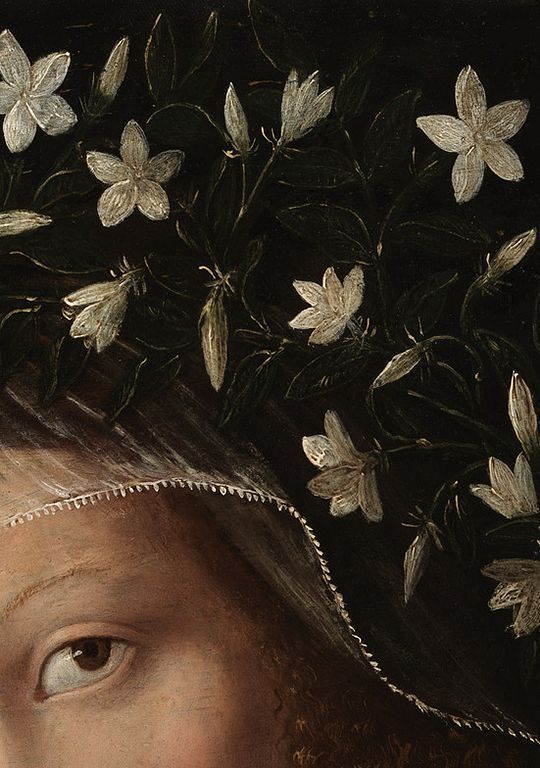
Bartolomeo Veneto, St. Catherine Crowned (detail), 1520
0 notes
Text

St. Catherine church in Frankfurt am Main, Hesse, Germany
French vintage postcard
#postcard#ansichtskarte#briefkaart#st. catherine#photography#catherine#carte postale#vintage#postkarte#photo#historic#postkaart#ephemera#main#frankfurt#hesse#sepia#church#germany#french#tarjeta#postal
3 notes
·
View notes
Text

Simon Bening - Virgin and Child, Saints Catherine and Barbara (c. 1520)
19 notes
·
View notes
Text
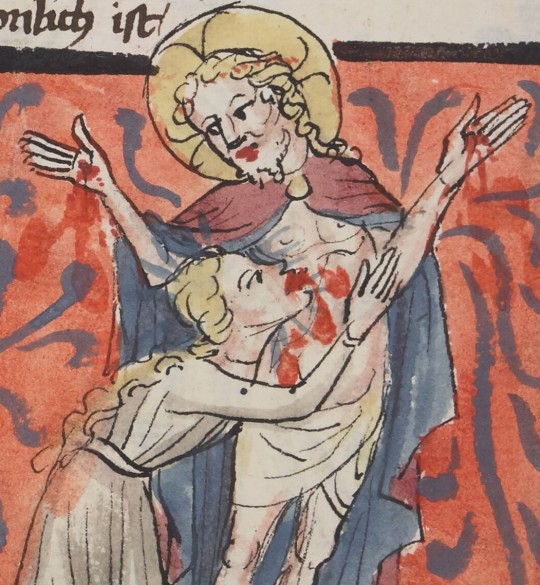

st. catherine of siena drinking from christ's side wound
in a hagiography of st. catherine of siena, alsace, early 15th c.
source: Paris, BnF, ms. allem. 34, fol. 43v
6K notes
·
View notes
Text
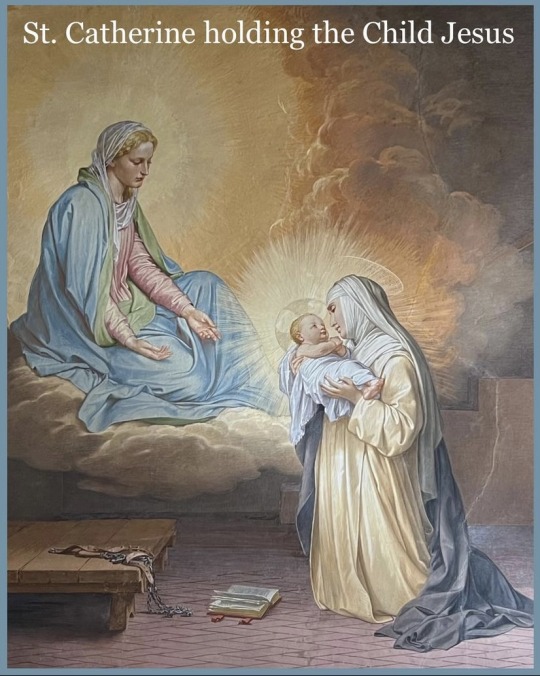
I got this image from an Instagram account called Mary_my_Mother
0 notes
Text
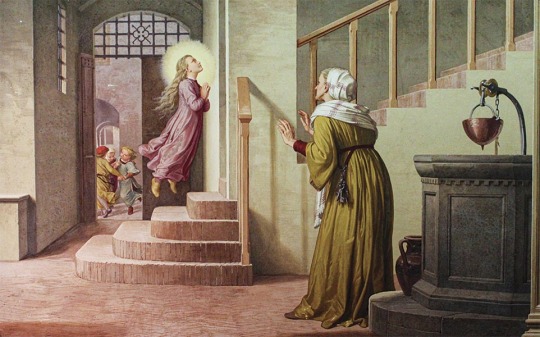
Scenes from St. Catherine’s life: being carried through the air as a child.
3 notes
·
View notes
Photo

Joan of Arc by dashinvaine
All the popular religions in the world are made apprehensible by an array of legendary personages, with an Almighty Father, and sometimes a mother and divine child, as the central figures. These are presented to the mind's eye in childhood; and the result is a hallucination which persists strongly throughout life when it has been well impressed. Thus all the thinking of the hallucinated adult about the fountain of inspiration which is continually flowing in the universe, or about the promptings of virtue and the revulsions of shame: in short, about aspiration and conscience, both of which forces are matters of fact more obvious than electro-magnetism, is thinking in terms of the celestial vision. And when in the case of exceptionally imaginative persons, especially those practising certain appropriate austerities, the hallucination extends from the mind's eye to the body's, the visionary sees Krishna or the Buddha or the Blessed Virgin or St Catherine as the case may be.
—George Bernard Shaw, Saint Joan
1 note
·
View note